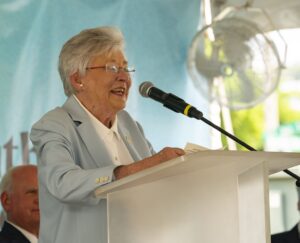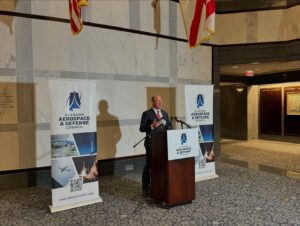In Selma, Joe Biden says right to vote remains under assault
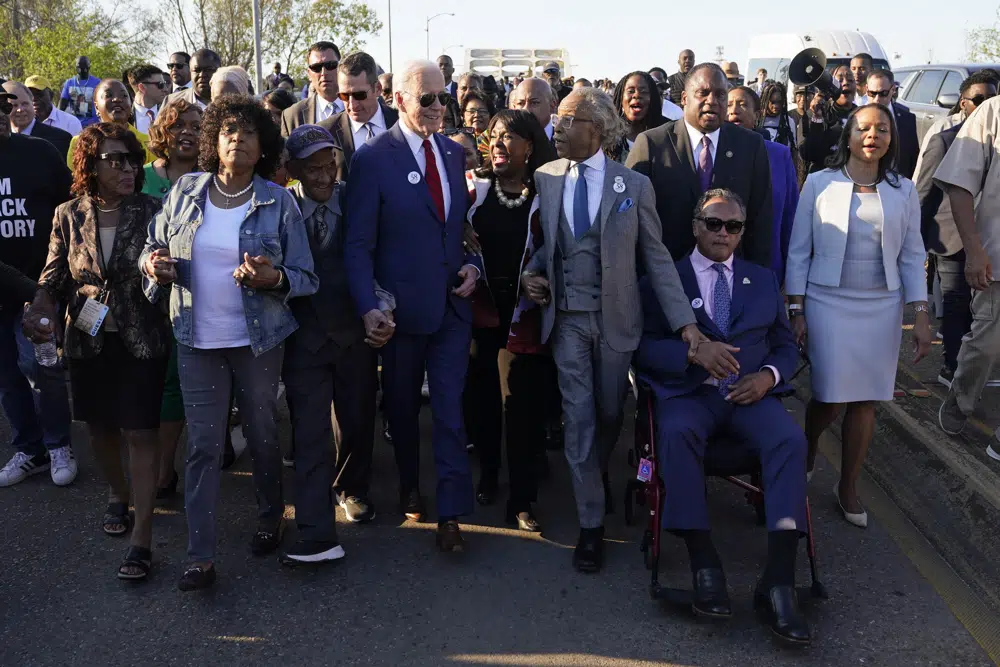
President Joe Biden used the searing memories of Selma’s “Bloody Sunday” to recommit to a cornerstone of democracy, lionizing a seminal moment from the civil rights movement at a time when he has been unable to push enhanced voting protections through Congress, and a conservative Supreme Court has undermined a landmark voting law. “Selma is a reckoning. The right to vote … to have your vote counted is the threshold of democracy and liberty. With it anything’s possible,” Biden told a crowd of several thousand people seated on one side of the historic Edmund Pettus Bridge, named for a reputed Ku Klux Klan leader. “This fundamental right remains under assault. The conservative Supreme Court has gutted the Voting Rights Act over the years. Since the 2020 election, a wave of states and dozens and dozens of anti-voting laws fueled by the ‘Big Lie’ and the election deniers now elected to office,” he said. As a candidate in 2020, Biden promised to pursue sweeping legislation to bolster protection of voting rights. Two years ago, his 2021 legislation, named after civil rights leader John Lewis, the late Georgia congressman, included provisions to restrict partisan gerrymandering of congressional districts, strike down hurdles to voting and bring transparency to a campaign finance system that allows wealthy donors to bankroll political causes anonymously. It passed the then-Democratic-controlled House, but it failed to draw the 60 votes needed to advance in a Senate under control by Biden’s party. With Republicans now running the House, passage of such legislation is highly unlikely. “We know we must get the votes in Congress,” Biden said, but there seems no viable path right now. The visit to Selma was a chance for Biden to speak directly to the current generation of civil rights activists. Many feel let down because of the lack of progress on voting rights, and they are eager to see his administration keep the issue in the spotlight. Few moments have had as lasting importance to the civil rights movement as what happened on March 7, 1965, in Selma and in the weeks that followed. Some 600 peaceful demonstrators led by Lewis and fellow activist Hosea Williams had gathered that day, just weeks after the fatal shooting of a young Black man, Jimmie Lee Jackson, by an Alabama trooper. Lewis and the others were brutally beaten by Alabama troopers and sheriff’s deputies as they tried to cross the Edmund Pettus Bridge at the start of what was supposed to be a 54-mile walk to the state Capitol in Montgomery as part of a larger effort to register Black voters in the South. “On this bridge, blood was given to help redeem the soul of America,” Biden said. The images of the police violence sparked outrage across the country. Days later, civil rights leader Martin Luther King Jr. led what became known as the “Turnaround Tuesday” march, in which marchers approached a wall of police at the bridge and prayed before turning back. President Lyndon B. Johnson introduced the Voting Rights Act of 1965 eight days after “Bloody Sunday,” calling Selma one of those rare moments in American history where “history and fate meet at a single time.” On March 21, King began a third march, under federal protection, that grew by thousands by the time they arrived at the state Capitol. Five months later, Johnson signed the bill into law. This year’s commemoration came as the historic city of roughly 18,000 was still digging out from the aftermath of a January EF-2 tornado that destroyed or damaged thousands of properties in and around Selma. The scars of that storm were still evident Sunday. Blocks from the stage where Biden spoke, houses sat crumbled or without roofs. Orange spray paint marked buildings beyond salvage with instructions to “tear down.” “We remain Selma strong,” Mayor James Perkins said, adding that “we will build back better.” He thanked Biden for approving a disaster declaration that helped the small city with the cost of debris cleanup and removal. ADVERTISEMENT Before Biden’s visit, the Rev. William Barber II, a co-chair of Poor People’s Campaign, and six other activists wrote Biden and members of Congress to express their frustration with the lack of progress on voting rights legislation. They urged Washington politicians visiting Selma not to sully the memories of Lewis and Williams and other civil rights activists with empty platitudes. “We’re saying to President Biden, let’s frame this to America as a moral issue, and let’s show how it effects everybody,” Barber said in an interview. Among those sharing the stage with Biden before the march across the bridge were Barber, the Rev. Jesse Jackson, Martin Luther King III, and the Rev. Al Sharpton. On the bridge crossing, marchers sang “This Little Light of Mine” and “We Shall Overcome,” and, following tradition, once they reached the point where Lewis and others were told in 1958 that they were on an unlawful march, they stopped and prayed. Water bottles were passed out to some who had gathered to hear Biden, and at least one person was taken away on a stretcher because of the upper-70s heat. Some had waited hours in the sun before relief came from shadows cast by nearby buildings. Delores Gresham, 65, a retired healthcare worker from Birmingham, arrived four hours early, grabbing a front-row spot so her grandchildren could hear the president and see the commemoration. “I want them to know what happened here,” she said. In his remarks, Biden said, “Everyone should know the truth of Selma.” And the president took a veiled dig at a high-profile Republican, Florida Gov. Ron DeSantis, when he said: “We should learn everything. The good, the bad, the truth, who we are as a nation.” DeSantis’ administration has blocked a new Advanced Placement course on African American studies from being taught in high schools, saying it violates state law and is historically inaccurate. Last year, he signed legislation that restricts certain race-based conversations and analysis in schools and businesses. More recently, his budget office called on state colleges to submit spending information on programs related to diversity, equity and inclusion, and critical
Alabama church of ‘Bloody Sunday’ on endangered places list
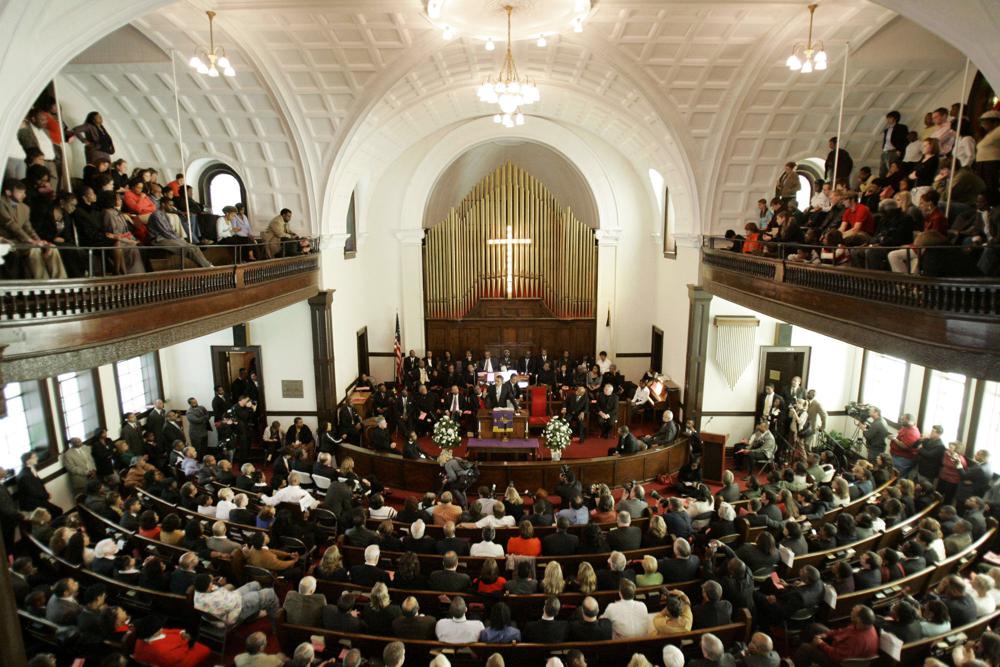
Like religious congregants all over, the people of historic Brown Chapel AME Church turned off the lights and locked the doors at the beginning of the COVID-19 pandemic because it wasn’t safe to gather for worship with a deadly virus circulating. For a time, the landmark church that launched a national voting rights movement in Selma, Alabama, was off-limits. What members found when they returned was heartbreaking: Termites had eaten so much wood that parts of the structure weren’t stable anymore, said member Juanda Maxwell, and water leaks damaged walls. Mold was growing in parts of the building, where hundreds met before Alabama state troopers attacked voting rights demonstrators on Bloody Sunday in 1965 at the Edmund Pettus Bridge. “It’s in horrible shape,” said Maxwell. “It’s a tough time. Because we were closed for a year, it exacerbated the problem with water coming in.” The red brick church, with distinctive twin bell towers and a domed ceiling, tops this year’s list of the nation’s most endangered historic places, according to the Washington, D.C.-based National Trust for Historic Preservation, a nonprofit organization which works to highlight and preserve sites that are in danger of being lost. Other places on the list include: — Chicano/a Murals painted on the sides of buildings in Colorado and inspired by the human rights and cultural movements of the 1960s and ’70s. — The Deborah Chapel, a Jewish mortuary building established in 1886 in Hartford, Connecticut. — Francisco Sanchez Elementary School, the closed centerpiece of the town in Umatac, Guam. — Minidoka National Historic Site, where more than 13,000 Japanese Americans were incarcerated during World War II in Jerome, Idaho. — Camp Naco, a base for Black Buffalo Soldiers dating back to 1919 along the U.S.-Mexican border in Naco, Arizona. — Picture Cave in Warrenton, Missouri, which holds indigenous artwork dating as far back more than 1,200 years by the Osage Nation. — Brooks Park Art and Nature Center, the home and art studio in East Hampton, New York, of James Brooks and Charlotte Park, who were important in the abstract expressionism movement in American art. — Palmer Memorial Institute, a boarding school built in 1902 for Black youths in Greensboro, North Carolina. — Olivewood Cemetery, an African American burial ground in Houston, Texas, dating to 1875 and containing more than 4,000 graves. — Jamestown, the site in Jamestown, Virginia, where enslaved people first arrived in America and where the first publicly elected assembly in the United States met. Brown Chapel, the first African Methodist Episcopal church in Alabama, was the site of preparations for a voting rights march from Selma to Montgomery on March 7, 1965, when police beat marchers led by the late Rep. John Lewis, then a young activist. Weeks later, thousands gathered there before the Selma-to-Montgomery march led by the Rev. Martin Luther King Jr. Maxwell is part of a group of Brown Chapel members serving on a foundation that’s trying to raise money for repairs estimated to exceed $4 million, she said. The church, located in a public housing community, has only a few dozen members in regular attendance, so it’s relying on grants and outside donations to fund the work. The National Park Service already has provided a grant of $1.3 million for the restoration of the church, which was constructed in 1908 by a formerly enslaved Black builder, A.J. Farley, and declared a National Historic Landmark in 1997. “Our goal is to try to receive over $3 million in grants to do the foundational work. After that we hope to get in more private donations,” Maxwell said. With members unable to gather in the building since repair work began in October, Maxwell said, the few who still attend continue meeting online. “We’re Zooming. The pastor is searching for a place,” she said. Republished with the permission of the Associated Press.
Kamala Harris marks ‘Bloody Sunday’ anniversary in Selma

Vice President Kamala Harris visited Selma, Alabama, on Sunday to commemorate a defining moment in the fight for equal voting rights, even as congressional efforts to restore the landmark 1965 Voting Rights Act have faltered. Under a blazing blue sky, Harris linked arms with rank-and-file activists from the civil rights movement and led thousands across the bridge where, on March 7, 1965, white state troopers attacked Black voting rights marchers attempting to cross. The images of violence at the Edmund Pettus Bridge — originally named for a Confederate general — shocked the nation and helped galvanize support for the passage of the Voting Rights Act. Harris called the site hallowed ground where people fought for the “most fundamental right of America citizenship: the right to vote.” “Today, we stand on this bridge at a different time,” Harris said in a speech before the gathered crowd. “We again, however, find ourselves caught in between. Between injustice and justice. Between disappointment and determination. Still in a fight to form a more perfect union. And nowhere is that more clear than when it comes to the ongoing fight to secure the freedom to vote.” The nation’s first female vice president — as well as the first African American and Indian American in the role — spoke of marchers whose “peaceful protest was met with crushing violence. They were kneeling when the state troopers charged. They were praying when the billy clubs struck.” Police beat and tear-gassed the marchers, fracturing the skull of young activist John Lewis, a lion of the civil rights movement who went on to long and celebrated career as a Georgia congressman. President Joe Biden on Sunday renewed his call for the passage of voting legislation, saying the groundbreaking 1965 Voting Rights Act “has been weakened not by brute force, but by insidious court decisions.” The proposed legislation is named for Lewis, who died in 2020, and is part of a broader elections package that collapsed in the U.S. Senate earlier this year. “In Selma, the blood of John Lewis and so many other courageous Americans sanctified a noble struggle. We are determined to honor that legacy by passing legislation to protect the right to vote and uphold the integrity of our elections,” Biden said in a statement. Democrats have been unsuccessfully trying to update the landmark law and pass additional measures to make it more convenient for people to vote. A key provision of the law was tossed out by a U.S. Supreme Court decision in 2013. Among those gathered Sunday were rank-and-file activists from the 1965 march. Harris walked across the bridge beside Charles Mauldin, who was sixth in line behind Lewis on Bloody Sunday and was beaten with a nightstick. Two women who fled the violence said having a Black woman as vice president seemed unimaginable 57 years ago. “That’s why we marched,” said Betty Boynton, the daughter-in-law of voting rights activist Amelia Boynton. “I was at the tail end and all of the sudden I saw these horses. Oh my goodness, and all of the sudden … I saw smoke. I didn’t know what tear gas was. They were beating people,” Boynton said recalling Bloody Sunday. But Boynton said the anniversary is tempered by fears of the impact of new voting restrictions being enacted. “And now they are trying to take our voting rights from us. I wouldn’t think in 2022 we would have to do all over again what we did in 1965,” Boynton said. Ora Bell Shannon, 90, of Selma, was a young mother during the march and ran from the bridge with her children. Ahead of Bloody Sunday, she and other Black citizens stood in line for days at a time trying to register to vote in the then white-controlled city, facing impossible voter tests and long lines. “They knew you wouldn’t be able to pass the test,” Shannon recalled. The U.S. Supreme Court in 2013 gutted a portion of the 1965 law that required certain states with a history of discrimination in voting, mainly in the South, to get U.S. Justice Department approval before changing the way they hold elections. The supporters of the end of preclearance said the requirement — while necessary in the 1960s — was no longer needed. Voting rights activists have warned the end of preclearance is emboldening states to pass a new wave of voting restrictions. The proposed Freedom to Vote: John R. Lewis Act would restore the preclearance requirement and put nationwide standards for how elections operate — such as making Election Day a national holiday and allowing early voting nationwide. Republished with the permission of the Associated Press.
Voter turnout sagging in troubled voting rights hub of Selma
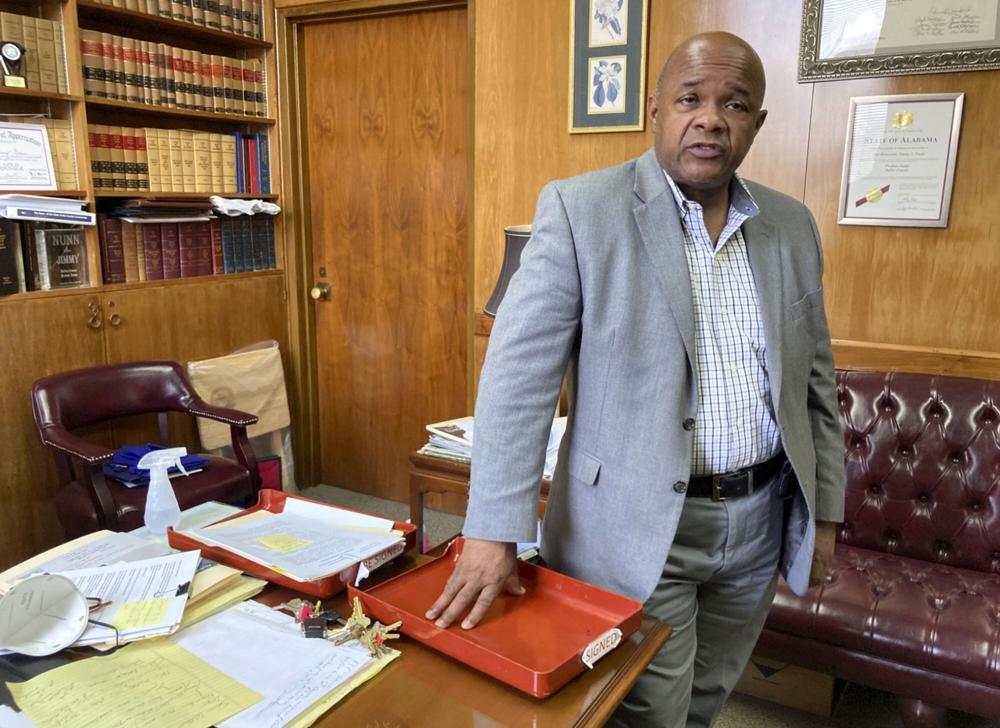
Fewer and fewer people are voting in Selma, Alabama. And to many, that is particularly heartbreaking. They lament that almost six decades after Black demonstrators on the city’s Edmond Pettus Bridge risked their lives for the right to cast ballots, voting in predominantly Black Selma and surrounding Dallas County has steadily declined. Turnout in 2020 was under 57%, among the worst in the state. “It should not be that way. We should have a large voter turnout in all elections,” said Michael Jackson, a Black district attorney elected with support from voters of all races. Thousands will gather on March 6 for this year’s re-enactment of the bridge crossing to honor the foot soldiers of that “Bloody Sunday” in 1965. Downtown will resemble a huge street festival during the event, known as the Selma Bridge Crossing Jubilee, with thousands of visitors, blaring music, and vendors selling food and T-shirts. Another Selma event, less celebratory and more activist, was held last year by Black Voters Matter. The aim was to boost Black power at the ballot box. But the issues in Selma — a onetime Confederate arsenal, located about 50 miles (80 kilometers) west of Montgomery in Alabama’s old plantation region — defy simple solutions. Some cite a hangover from decades of white supremacist voter suppression, others a 2013 Supreme Court ruling that gutted key provisions of federal voting law to allow current GOP efforts to tighten voting rules. Some Black voters, who tend to vote Democratic, simply don’t see the point in voting in a state where every statewide office is held by white Republicans who also control the Legislature. Then there is what some describe as infighting between local leaders, and low morale in a crime-ridden town with too many pothole-covered streets, too many abandoned homes, and too many vacant businesses. All are considered factors that helped lead to a 13% decline in population over the last decade in a town where more than one-third live in poverty. Despite visits from presidents, congressional leaders, and celebrity luminaries like Oprah Winfrey — and even the success of the 2014 historical film drama “Selma” by Ava DuVernay — Selma never seems to get any better. Resident Tyrone Clarke said he votes when work and travel allow, but not always. Many others don’t because of disqualifying felony convictions or disillusionment with the shrinking town of roughly 18,000 people, he said.ADVERTISEMENT “You have a whole lot of people who look at the conditions and don’t see what good it’s going to do for them,” Clarke said. “You know, ‘How is this guy or that guy being in office going to affect me in this little, rotten town here?’” But something else seems to be going on in Selma and Dallas County. Other poor, mostly Black areas have not seen the same drastic decline in turnout. Only one of Alabama’s majority Black counties, Macon, the home of historically Black Tuskegee University, had a lower voter turnout than Dallas in 2020. Selma is hardly the only place where big Black majorities don’t always translate to big voter turnout. The U.S. Census Bureau found that a racial gap persisted nationwide in voting in 2020, with about 71% of white voters casting ballots compared to 63% of eligible Black people. A majority of Dallas County’s voters are Black, and Black people made up the largest share of the county’s vote in 2020, about 68%, state statistics show. But white voters had a disproportionally larger share of the county electorate compared to Black voters, records showed. Jimmy L. Nunn, a former Selma city attorney who became Dallas County’s first Black probate judge in 2019, said the community is weighed down by its own history. “We have been programmed that our votes do not count, that we have no vote,” said Nunn, who works in the same county courthouse where white, Jim Crow officeholders refused to register Black voters, helping inspire the protests of 1965. “It is that mindset we have to change.” Selma entered voting rights legend because of what happened at the foot of the Edmond Pettus Bridge, which is named for a onetime Confederate general and reputed Ku Klux Klan leader, on March 7, 1965. After months of demonstrations and failed attempts to register Black people to vote in the white-controlled city, a long line of marchers led by John Lewis, then a young activist, crossed the span over the Alabama River headed toward the state capital of Montgomery to present demands to Gov. George C. Wallace, a segregationist. State troopers and sheriff’s posse members on horseback stopped them. A trooper bashed Lewis’ head during the ensuing melee and dozens more were hurt. Images of the violence reinforced the evil and depth of Southern white supremacy, helping build support for the Voting Rights Act of 1965. In the following decades, Selma became a worldwide touchstone for voting rights, with then-President Barack Obama speaking at the 50th anniversary of Bloody Sunday in 2015. “If Selma taught us anything, it’s that our work is never done,” he said. “The American experiment in self-government gives work and purpose to each generation.” But in Selma, voting already was on the decline. After more than 66% of Dallas County’s voters went to the polls in 2008, when Obama become the nation’s first Black president, turnout fell in each presidential election afterward. Shamika Mendenhall, a mother of two young children with a third on the way, was among registered voters who did not cast a ballot in 2020. She often goes to the annual jubilee that marks the anniversary of Bloody Sunday and has relatives who participated in voting rights protests of the 1960s, and she’s still a little sheepish about missing the election. “To choose our president we ought to vote,” said Mendenhall, 25. A Black member of the county’s Democratic Party executive committee, Collins Pettaway III spends a lot of time pondering how to get young voters like Mendenhall more engaged. Older residents who remember Bloody Sunday and the subsequent Selma-to-Montgomery voting rights march vote, he said,
Kay Ivey participates in groundbreaking ceremony for restoration of Historic Brown Chapel AME Church
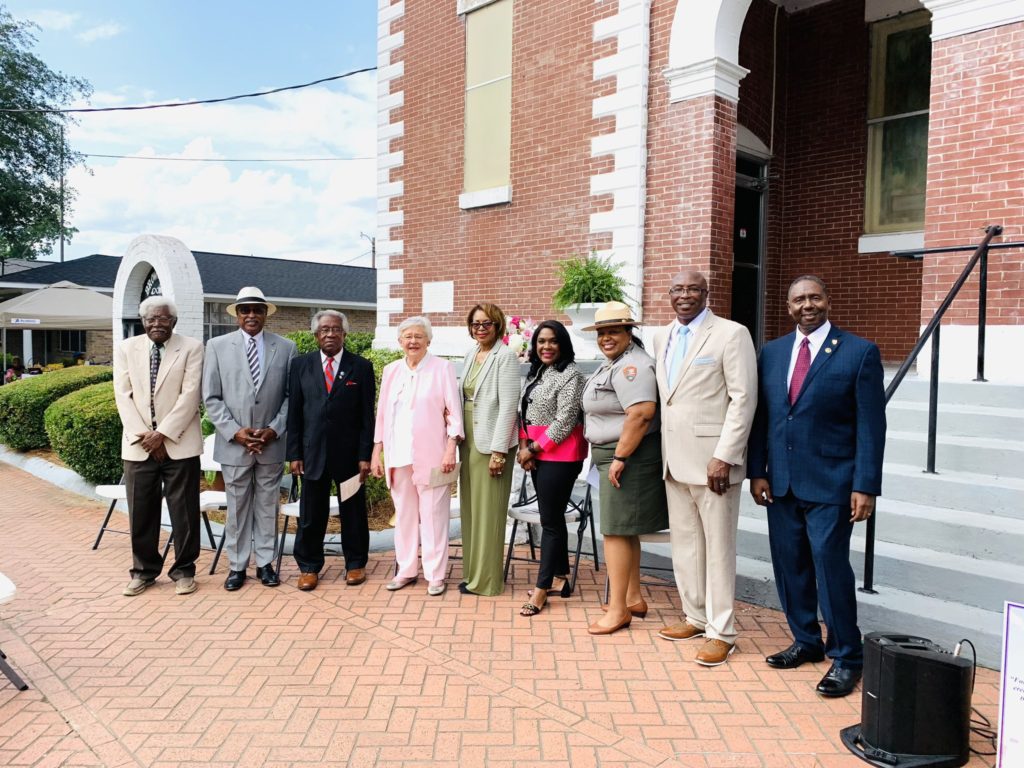
Last Wednesday, Governor Kay Ivey participated in a groundbreaking ceremony for the Restoration Project of the Brown Chapel AME Church in Selma, AL. Built in 1908, Brown Chapel will receive a $1.3 million grant from the National Park Service for the church’s restorations and repairs, including electrical work, roof work, and cupola repairs. The church serves as a historic Civil Rights landmark, originally gaining notoriety for its role in “Bloody Sunday,” which served as a catalyst for the Voting Rights Act of 1965. A recent press release from the Office of Governor Kay Ivey stated, “In the 1960s, the Brown Chapel AME Church became widely-known during the Voting Rights Movement for the “Bloody Sunday” confrontation and the subsequent march from the church to the state capitol in Montgomery. In March 1998, Brown Chapel AME Church was awarded the distinctive status of a National Historic Landmark for its significant participation in the struggle for equality and justice for all people.” On Twitter, she commented, “It was truly an honor to join Brown Chapel AME Church for the groundbreaking of their $1.3 million restoration project. This National Historic Landmark church’s legacy with the Civil Rights Movement will on for future generations.” It was truly an honor to join Brown Chapel AME Church for the groundbreaking of their $1.3 million restoration project. This National Historic Landmark church’s legacy with the Civil Rights Movement will live on for future generations. #alpolitics pic.twitter.com/4UVhdtYVvY — Governor Kay Ivey (@GovernorKayIvey) June 23, 2021 Ivey reflected on Selma’s rich history in the fight for Civil Rights during her speech last week, “These new renovations will add to the significance of this historic landmark and continue to showcase the deep-rooted history of the civil rights movement and the city of Selma.” Congresswoman Terri Sewell, Selma Mayor James Perkins, and former Alabama GOP Chair Terry Lathan, among other state leaders, were also in attendance at the ceremony. Sewell recalled attending the church in her youth with her family and thanked the National Park Service during her speech at the ceremony. “It’s always good to be back in Selma,” Sewell expressed. “This $1.3 million grant from the National Park Service will do is to ensure that America’s story lives on, that we who are members of this great church are not alone in preserving it because this church is a part of America’s history.” Rep. Sewell stated on Twitter, “Brown Chapel AME has always symbolized the rich history of the Civil Rights Movement and remains critical to understanding where our nation stands today. This $1.3 million grant ensures that it will be preserved not only in our hearts, but also in American History.” Brown Chapel AME has always symbolized the rich history of the Civil Rights Movement and remains critical to understanding where our nation stands today. This $1.3 million grant ensures that it will be preserved not only in our hearts, but also in American History. pic.twitter.com/rwvCTsdXQp — Rep. Terri A. Sewell (@RepTerriSewell) June 23, 2021
Body of civil rights icon John Lewis crosses Selma bridge

The late U.S. Rep. John Lewis crossed the Edmund Pettus Bridge in Selma, Alabama, for the final time Sunday as remembrances continue for the civil rights icon. The bridge became a landmark in the fight for racial justice when Lewis and other civil rights marchers were beaten there 55 years ago on “Bloody Sunday,” a key event that helped galvanize support for the passage of the Voting Rights Act. Lewis returned to Selma each March in commemoration. Sunday found him crossing alone — instead of arm-in-arm with civil rights and political leaders — after his coffin was loaded atop a horse-drawn wagon that retraced the route through Selma from Brown Chapel African Methodist Episcopal Church, where the 1965 march began. As the black wagon pulled by a team of dark-colored horses approached the bridge, members of the crowd shouted “Thank you, John Lewis!” and “Good trouble!” the phrase Lewis used to describe his tangles with white authorities during the civil rights movement. Some crowd members sang the gospel song “Woke Up This Morning With My Mind Stayed on Jesus.” Later, some onlookers sang the civil rights anthem “We Shall Overcome” and other gospel tunes. Lewis died July 17 at 80, months after he was diagnosed with advanced pancreatic cancer. Lewis served in the U.S. House of Representatives for Georgia’s 5th congressional district from 1987 until his death. The wagon rolled over a carpet of rose petals, pausing atop the bridge over the Alabama River in the summer heat so family members could walk behind it. On the south side of the bridge, where Lewis was beaten by Alabama state troopers in 1965, family members placed red roses that the carriage rolled over, marking the spot where Lewis spilled his blood and suffered a head injury. As a military honor guard lifted Lewis’ casket from the horse-drawn wagon into an automobile hearse, Alabama state troopers, including some African American ones, saluted Lewis. Franz and Ellen Hill drove more that four hours from Monroe, Louisiana, to watch the procession. Franz Hill, 60, said he remembers, as an African American child, watching news footage of Lewis and other civil rights marchers being beaten by law enforcement officers. “I had to come back and see John Lewis cross this bridge for the last time,” said Hill. “It’s funny to see the state troopers waiting on him for a whole different reason, to honor and respect him rather than beat the crap out of him.” There has been a movement to rename the Edmund Pettus Bridge after Lewis, but the idea has also faced opposition from those who note that Lewis wasn’t the only activist beaten on the bridge that day. Lewis’ body was then taken to the Alabama Capitol in the afternoon to lie in repose, retracing the route marchers took in the days after Bloody Sunday to demand justice from Alabama Gov. George Wallace. Bertha Surles and Edna Goldsmith stood along the highway between Selma and Montgomery to pay their final respects. Both carried signs, reading “Thank you.” “He fought for equal rights up unto his death,” said Surles, 70. She was in high school on Bloody Sunday and remembered watching the news footage of Lewis being beaten with horror. “They didn’t give up and something good came from it. Still need some improvement, but something good came from it.” Lewis left his family’s farm in Pike County, Alabama, in the 1950s to begin the fight against segregation and racial oppression. He received a hero’s welcome on his final stop in his home state. After tracing the route of the completed Selma to Montgomery march, an honor guard carried Lewis’ flag-draped casket into the Alabama Capitol, which had served as the first capitol of the Confederacy. Peggy Wallace Kennedy, the daughter of former segregationist governor Wallace, was among those in the Capitol for the receiving ceremony, along with most of Alabama’s congressional delegation. Alabama Gov. Kay Ivey placed a wreath of flowers shaped like the Alabama flag by the casket. U.S. Rep. Terri Sewell placed a wreath shaped like the American flag. His family members, many wearing shirts with the phrase “Good Trouble,” were led first into the Capitol before the public viewing later in the afternoon. A line of people, some carrying umbrellas for shade, waited under the brutal midday Alabama sun to go inside and pay their respects. After the viewing, his casket was carried out as the song “Amazing Grace” was sung. Bernice King, the daughter of Martin Luther King Jr., spoke at a vigil for Lewis across the street from the Capitol, just a block away from the church her father led during the civil rights movement. Standing in front of large letters, spelling out the word “VOTE,” she recalled the man her father called “the boy from Troy” and her family called Uncle John. “The most astounding thing about Congressman Lewis being left for dead on that bridge (in 1965) is how he got up both physically and spiritually. When he recovered, he recovered without a trace of bitterness or hostility or without losing hope in our Democracy,” Bernice King said. She called for today’s young activists to take inspiration from Lewis’ non-violent leadership and for Congress to honor Lewis’ life legacy by restoring and expanding the Voting Rights Act of 1965. “This would be a fitting tribute and a way to honor this non-violent warrior who said the vote is the most powerful tool that we have,” she said. A series of events began Saturday in Lewis’ hometown of Troy, Alabama, to pay tribute the late congressman and his legacy. He will lie in state at the U.S. Capitol next week before his private funeral Thursday at Atlanta’s historic Ebenezer Baptist Church, which the Rev. Martin Luther King Jr. once led. ___ This story corrects the spelling of the first name of Franz Hill. Republished with the permission of the Associated Press.
Retired Alabama Power vice president still marching from Selma to Montgomery
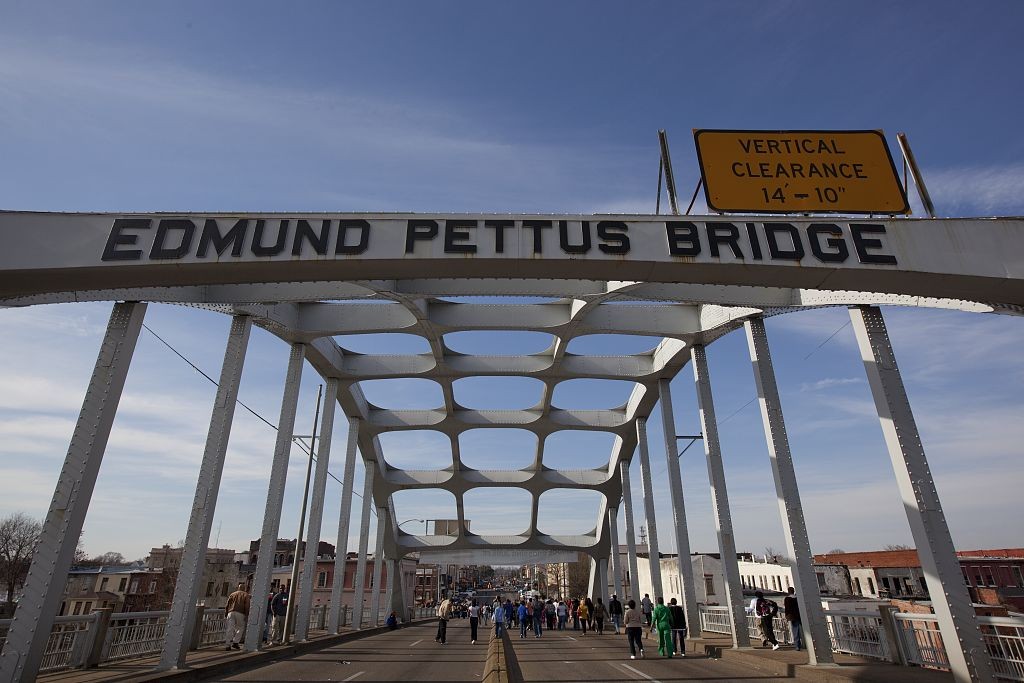
When former Alabama Power vice president Julian Smith retired in 2008, he continued overseeing fundraising efforts for the Selma to Montgomery March Foundation board. Born and raised in Selma, Smith was no stranger to the issues around civil rights. (The Voting Rights Act was signed by President Lyndon Johnson after the first march in 1965.) Smith’s involvement began when his longtime friend, State Sen. Hank Sanders, invited him to a breakfast meeting to discuss an upcoming march celebration. “Julian was with the Selma to Montgomery Foundation board from its inception,” Sanders said. “The official entity was set up in 2014, but Julian was doing sponsorship work decades before.” “Fundraising for the Selma to Montgomery March was a big passion,” Smith said. “While I was in college, I became focused on human rights and justice for all. It was my aim to get as many sponsors as possible to fund this incredible project.” Smith’s fundraising skills brought as much as $100,000 from corporate sponsors throughout the state during celebratory years, Sanders said. “Great sponsorships have enabled Selma to be better perceived nationally and internationally,” Smith said. “The image of Selma has been transformed into a positive light. It is seen as a more unified community.” “Julian had a fantastic understanding of human rights. He understood the people, the players and knew how to handle problems,” Sanders said. “Julian knew how to get things done. He knew how to touch people and he knew what situations took priority. He had a broad understanding of the critical issues in Alabama. He was concerned about everyone, not just one particular community.” Smith’s largest fundraising campaign was in 2015 when President Barack Obama attended the 50th anniversary of “Bloody Sunday,” the initial attempt to march that was cut short when marchers were beaten by lawmen at the foot of the Edmund Pettus Bridge. Memories of that attack on March 7, 1965, magnified contributions to the foundation. More than 100,000 people attended 50 commemorative events in Selma. Contributions from the foundation continue to aid the annual Bridge Crossing Jubilee, and associated entertainment, food, police protection and crowd control. After the foundation was formed, Smith made it a stronger entity, Sanders said, “but his greatest accomplishment was fundraising. “Julian is and will always be a gift to Alabama,” Sanders said. Members of the board include Chairman James Mitchell of Wallace Community College Selma, Johnny Johns of Protective Life Corp., Stephanie Bryan of the Poarch Band of Creek Indians, Ed McCurdy of Regions Bank, Felecia Pettway of Wallace Community College Selma, Selma attorney Carolyn Gaines-Varner, Sharon Wheeler of W2 Strategies. “There is a lot of teamwork that goes into fundraising,” Smith said. “None of this is possible without great board members. These folks are the glue that holds every plan in place.” Selma holds the nation’s largest annual civil rights celebration. Thousands of people attended the 53rd annual National Voting Rights Act, Bloody Sunday Commemoration and the Bridge Crossing Jubilee March 2-5. Smith recently retired from the foundation board. He remains a strong supporter of civil rights. This story originally appeared on Alabama News Center.
Commemoration of ‘Bloody Sunday’ set in Alabama
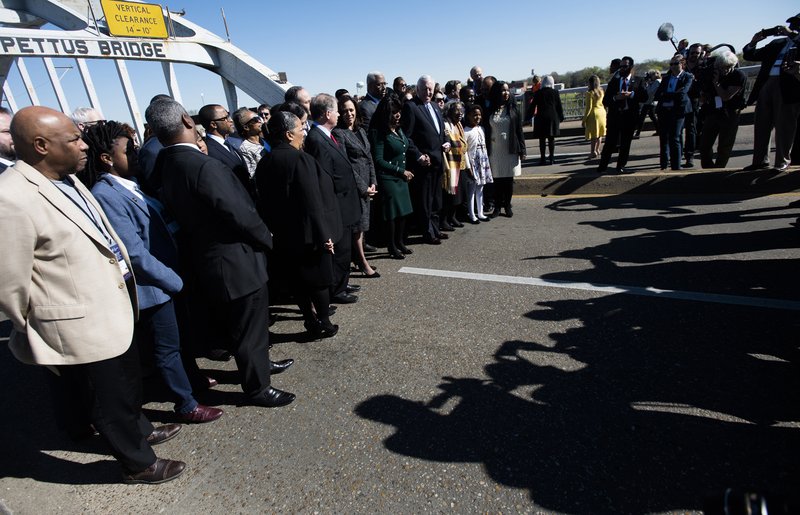
Several members of Congress have joined civil rights activists and others for the annual commemoration of a day of racial violence in Selma dating to 1965. A bipartisan group including Rep. John Lewis of Georgia led the crossing of the Edmund Pettus Bridge on Sunday afternoon. It was to recall “Bloody Sunday,” when voting rights protesters were attacked by police as they attempted to cross the bridge. Lewis, then a young organizer, was among those injured then. That violence set the stage for the Selma-to-Montgomery march, which helped build support for congressional approval of the Voting Rights Act months later. The annual celebration drew tens of thousands of people in 2015, when then-President Barack Obama spoke near the base of the bridge as former President George W. Bush listened. Republished with permission of The Associated Press.
Terri Sewell: Remembering Bloody Sunday

History is never stagnant. The saga of American democracy and the battle for the right to vote has its moments of inspiration, just as it has moments of defeat. The story this year’s chapter will tell is in our hands. Fifty-two years ago today, 600 marchers in Selma, Ala., brought the reality of racism and segregation into living rooms nationwide. That day, hundreds of voting rights supporters were viciously beaten by state troopers as they attempted to cross the Edmund Pettus Bridge. The brutal stories of Bloody Sunday reframed the issue of racism for the American public and ultimately led to passage of the Voting Rights Act of 1965 (VRA), our nation’s most powerful tool for protecting the vote. But the story of America’s fight for fair elections is never finished. After 48 years of bipartisan support from Congress and the White House, the VRA was gutted by the Supreme Court in its 2013 Shelby v. Holder decision, eliminating key protections for minority voters. On the 50th Anniversary of Bloody Sunday in 2015, our nation had an opportunity to undo that damage. That year, I joined President Barack Obama, President George W. Bush and a bipartisan group of more than 100 Members of Congress in Selma to commemorate the voting rights movement. It was an atmosphere of hope and unity in opposition to the hate and racism of our country’s past. Yet we returned to Washington, and Congress did nothing to restore the VRA. Today’s anniversary of Bloody Sunday is another opportunity to recommit to protecting voting rights for all Americans, but it is also a moment to reflect on the fresh urgency of that work. Old battles have become new again. This year’s commemoration of Bloody Sunday comes on the heels of the announcement that the Justice Department would drop challenges to a discriminatory Texas voter ID law, even after that law was struck down twice by courts for undermining minority voting rights. This year’s commemoration was also set against the backdrop of an executive order barring immigrants from Muslim-majority countries from coming into the United States. When Dr. Martin Luther King, Jr. completed his Selma to Montgomery march in 1965, after multiple attempts blocked by the police, he spoke to a crowd of nearly 50,000 supporters. In his speech, he told his audience that “no tide of racism can stop us.” This year I find those words have new resonance. Perhaps Dr. King was right – maybe hate is a tide: one that rolls in and out. This year, we face a rising tide of intolerance that’s had an immeasurable impact on my community. Last week, a bomb threat was called into a Birmingham Jewish community center in my district, the third threat in just one month’s time. I received messages from families who attend the center and were frightened for their safety and hurt by the threats against them. I’ve received messages from Muslim constituents who have family abroad, afraid that a travel ban will block them from seeing their loved ones. I’ve met with constituents worried for undocumented members of their community living in the United States. Looking back at photos from Bloody Sunday, the fear and pain that I see in the eyes of those who marched does not seem so foreign. I recognize the hurt of a people assaulted, threatened, and excluded because of who they are. But I also see courage. When I look at pictures of marchers like Amelia Boynton Robinson, I see a black woman who stood up to hate wherever she encountered it. This year, the 1965 Selma to Montgomery marches do not seem like a thing of the past, but instead a model for our work. We have to act as those in the voting rights movement did, and stand together for the rights of all Americans. I am a direct beneficiary of the movement. I was born the year that the Selma to Montgomery marches took place, and I owe those who fought, bled and died a debt of gratitude that I can never repay. But their story, and the story of America’s voting rights movement, is never finished. When Americans today suffer from some of the same injustices suffered 52 years ago, we cannot ignore the work left to be done. If the brutal stories of Bloody Sunday teach us anything this year, it’s that we must not only remember, but also dedicate ourselves to action. Together, we have a tide to turn back. ••• This article first appeared on TheHill.com. ••• Rep. Terri A. Sewell (D-Ala.) is serving her fourth term representing Alabama’s 7th District. She sits on the House Permanent Select Committee on Intelligence and was recently appointed to the House Ways and Means Committee.
Selma to commemorate”Bloody Sunday” will host largest voting rights commemoration event in US
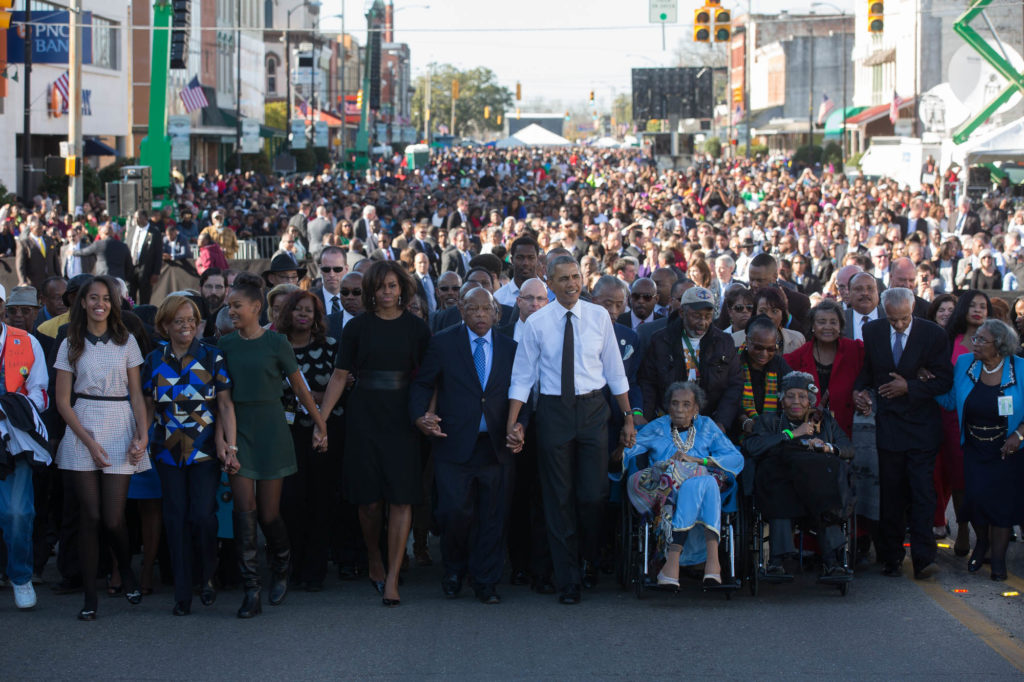
On Thursday, March 2 through Sunday, March 5, Selma, Ala. will host the largest voting rights commemoration event in the country — the Bridge Crossing Jubilee 2017 — remembering the 52nd anniversary of the Selma to Montgomery “Bloody Sunday” march. This annual event commemorates “Bloody Sunday,” when on March 7, 1965, a group of roughly 525 African American protesters planned to cross the Edmund Pettus Bridge on their civil rights march to Montgomery to demand the right to vote. At the bridge they where they were met by more than 50 state troopers and a few dozen men on horseback. When the demonstrators refused to turn back, they were brutally beaten, leaving at least 17 hospitalized, and 40 others injured. The violent attack, which was broadcast on national television, caught the attention of millions of Americans and was aptly dubbed “Bloody Sunday” and ultimately became a rallying point for civil rights leaders. While details of this year’s event are still being finalized, there will be workshops on the following topics: Voting Immigration Criminal Justice Education Economic Empowerment Health and Environment Special Workshop by SNCC Legends Additionally, the weekend will feature over 40 events including: Parade Blues Hip-hop and gospel music festival Step show Pageant Mock trial Unity breakfast Freedom Flame Awards Hip-hop summit Storytelling by Living History Makers March re-enactment and more Those interested in attending may purchase tickets online.

